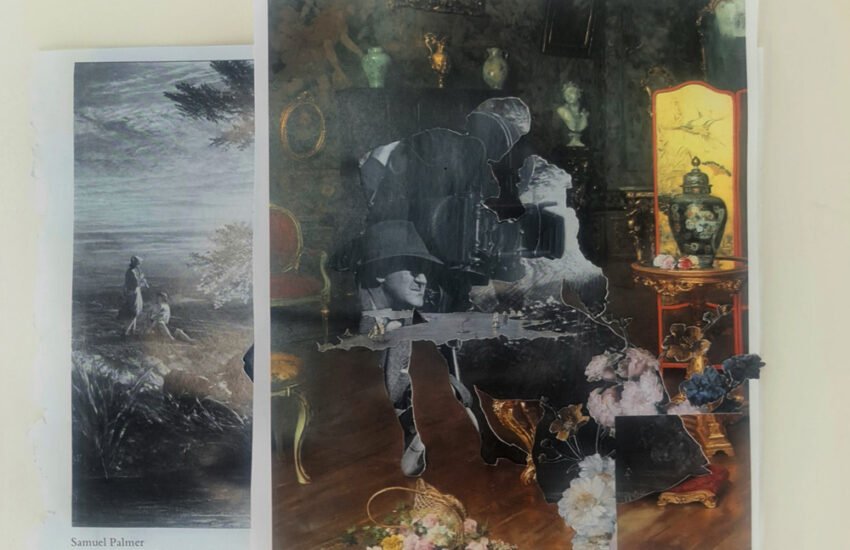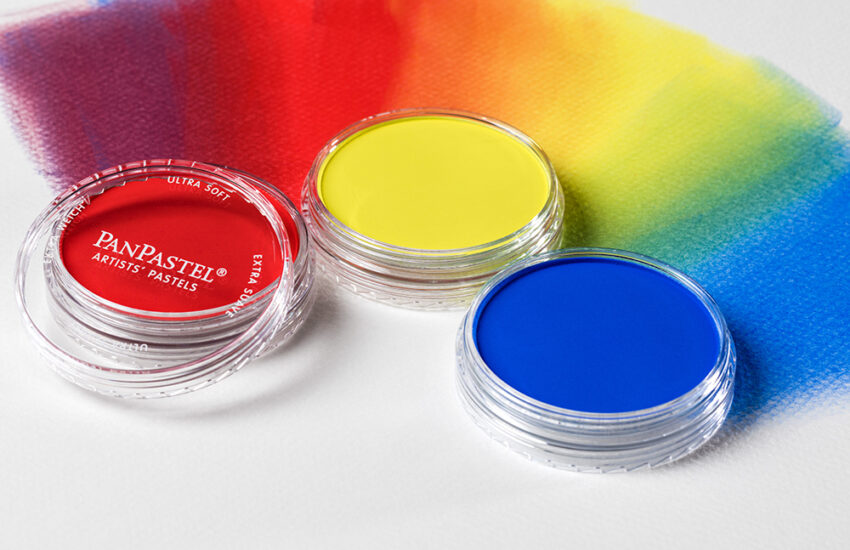Understanding Watercolour Paper Sizes
Ever looked at watercolour paper and wondered exactly what an imperial sheet is? Or maybe you’re looking for a specific size only to be overwhelmed by a puzzle of metric and imperial measurements? For artists, navigating the world of watercolour paper can be as difficult as mastering the strokes of a painting. In this blog post, we’ll untangle the mystery and guide you through everything from traditional imperial sizes to their metric equivalents.
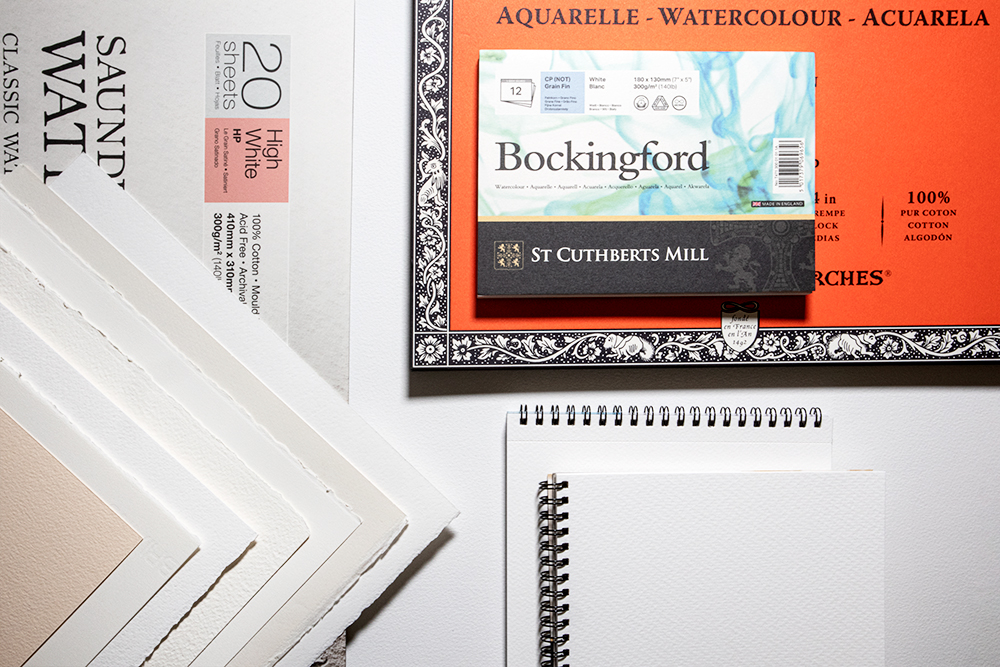
Watercolour Paper sizes can be a bit of a puzzle. You’ll likely have found yourself weaving through a mix of imperial and metric sizes. Sometimes with the occasional A size thrown in for good measure! Needless to say, it’s a journey that can leave you feeling a tad lost, especially if you’re new to watercolour painting. To add to the confusion, paper size standards in general vary all over the world. Take the UK and the US for example. Each region has their own set of favoured paper measurement systems. For instance, when you explore brands imported from the United States, you’ll encounter a number of inch-based sizes that don’t quite neatly fit into either the A or imperial standards.
Feeling confused? Read on and we’ll guide you through the world of watercolour paper sizes.
Exploring Traditional Imperial Sheet Sizes
Historically, paper has been available in an astonishing array of shapes and sizes. A degree of order came when Britain adopted the Imperial System in 1836. The Imperial System encompasses a whole range of paper sizes. It includes some unusually named measurements like the Elephant, Double Elephant and Foolscap. There’s a chance you may come across these names when you’re searching for large sheets of paper, but most of them have fallen out of favour in general use. Although the Imperial system has mostly been superseded by the metric system, we still use imperial measurements to refer to the size and weight of fine art papers.
Loose Watercolour Paper Sheets
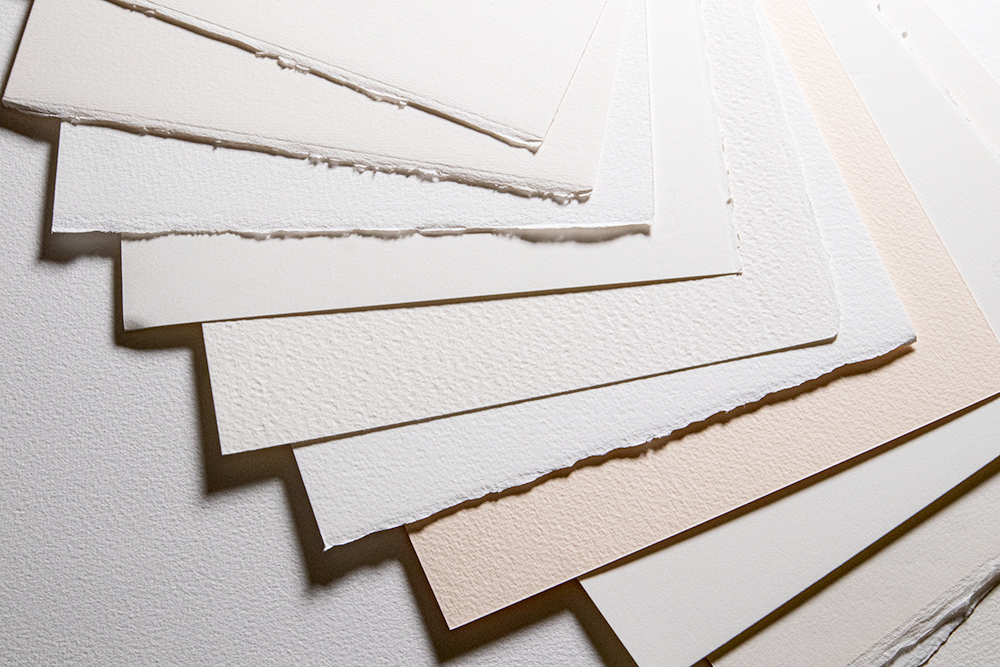
Most of our loose watercolour paper sheets are available in full imperial sheets. We can also cut the majority of them down into smaller sizes free of charge. On the product pages for our watercolour paper packs these are the sizes you’re likely to find:
- Full Imperial – 22” x 30” (559 × 762 mm)
- Half Imperial – 15” x 22” (381 x 559mm)
- Quarter Imperial – 11” x 15” (279x 381mm)
It’s worth noting that when paper is cut down it loses some of the characteristics of a full sheet. Most full imperial sheets of watercolour paper are finished with deckled edges and a watermark. Cutting down a sheet will change the number of deckled edges per sheet, and also the number of sheets with a watermark.
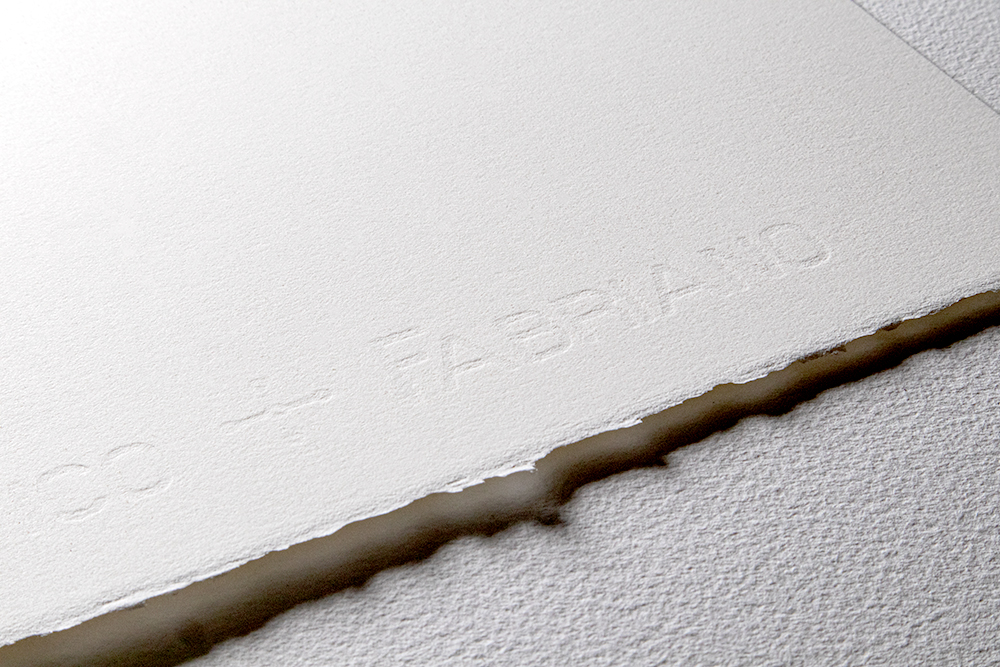
For example, a single sheet of Arches Aquarelle Watercolour Paper has four deckled edges and a watermark in the bottom right corner. Cutting this in half will give two sheets, each with three deckled edges, but only one sheet will have a watermark. Cut in half again and you’ll only have two deckle edges per sheet and three sheets will be without a watermark.
Although we consider these to be standard sizes, there are some ranges of paper that come in a little smaller than a standard imperial sheet. For example, a full sheet of both Botanical Ultra Smooth and Fabriano 5 measure approximately 19.6” x 27.5” (500 x 700mm).
Watercolour Paper Pads and Blocks
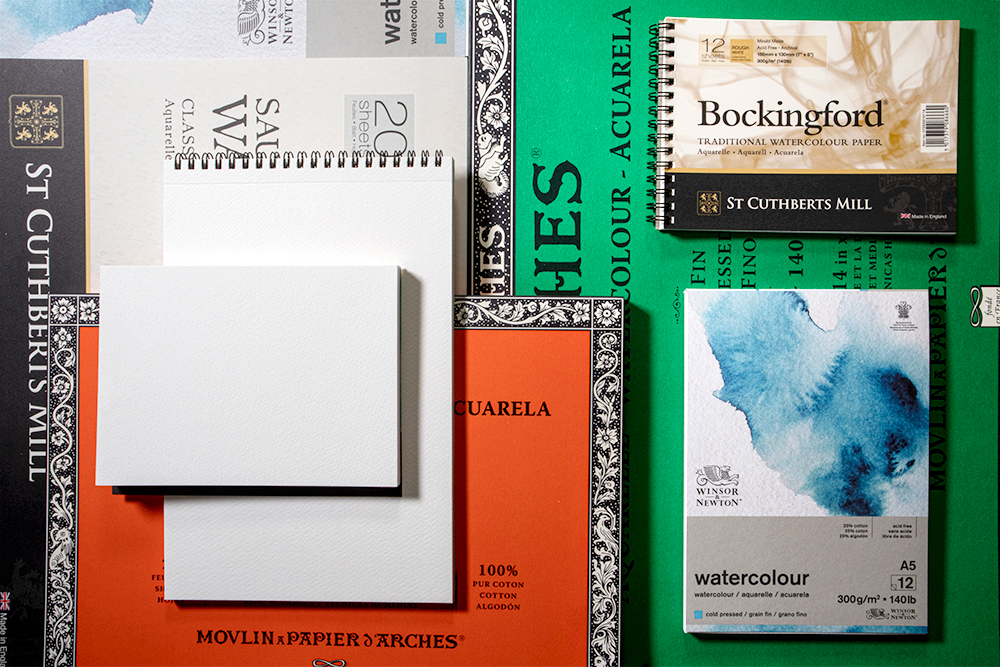
When you’re buying watercolour paper, you’ll notice that pads and blocks often come in a different range of sizes compared to full and cut sheets. They’re available in a range of convenient sizes, usually measured in inches. Among the most common sizes are 7” x 10”, 9” x 12”, 10” x 14”, 12” x 16” and 14” x 20”. Sometimes your options won’t stop there – some brands offer sizes up to 18” x 24”, and occasionally you’ll find square and panoramic formats.
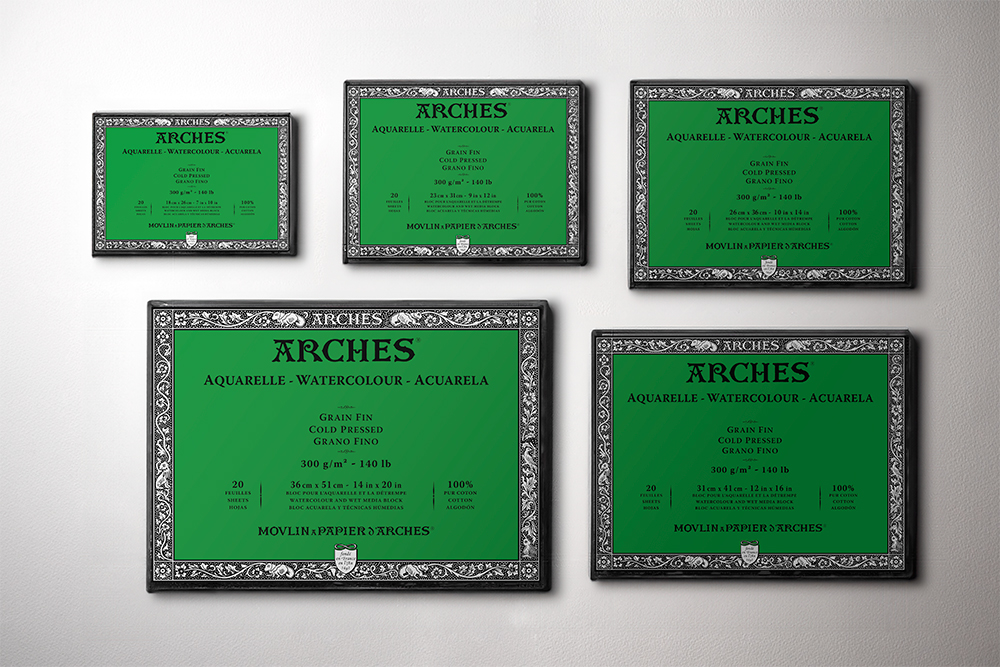
The Evolution of Standardisation: ISO ‘A’ Sizes
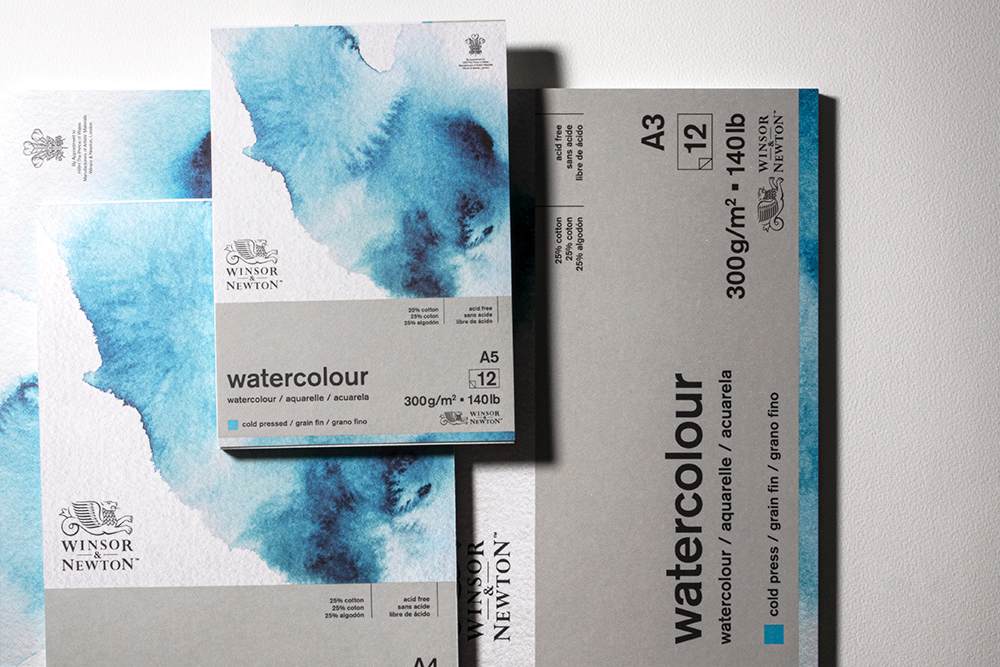
The idea of a standardized system was first conjured up by German scientist and philosopher Georg Christoph Lichtenberg in 1786. But it wasn’t until 1975 that it was officially adopted by the ISO (International Standards Organisation). The ISO is the world’s best-known quality management standard. Standardisation plays an important role in making international trade and commerce smoother. A set of common units shared across countries allows products to be more accurately measured and valued against each other.
You’ve most likely come across ISO paper sizes in the well known ‘A’ paper formats. In fact, A4 is the most commonplace paper size in Europe. Most people will recognise it as the size of a standard sheet of printer paper. Each time we move up a size in the A series, the sheet becomes half the size of the previous one. For example A1 is half the size of A0, A2 is half the size of A1 and so on.
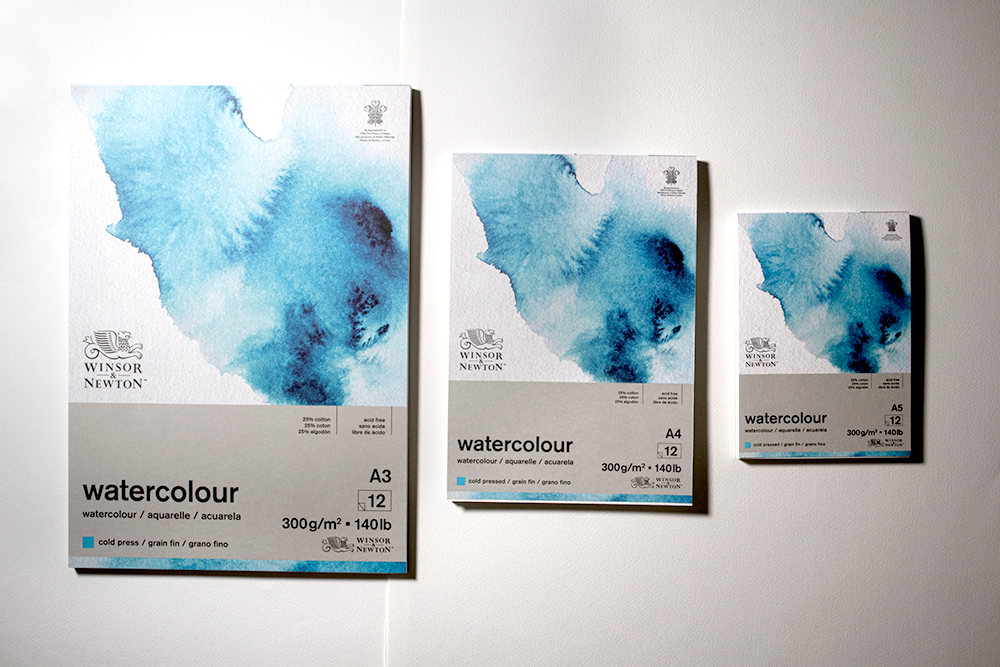
- A0 – 841 x 1189mm (33.1” x 46.8”)
- A1 – 594 x 841mm (23.4” x 33.1”)
- A2 – 420 x 594mm (16.5” x 23.4”)
- A3 – 297 x 420mm (11.7” x 16.5”)
- A4 – 210 x 297mm (8.3” x 11.7”)
- A5 – 148 x 210mm (5.8” x 8.3”)
- A6 – 105 x 148mm (4.1” x 5.8”)
While you won’t find many watercolour paper sheets available to exact A sizes (with the exception of Seawhite Watercolour Paper) , you’ll come across watercolour paper pads and sketchbooks made to these measurements.
Comparing Imperial and Metric Sizes Side by Side
Full Imperial and A1 are the largest standard sizes of paper on our website, unless you are buying a roll of watercolour paper. Some brands offer larger sizes, but these are usually only available as special order items. We’ve created some watercolour paper size comparison charts to help you visualise our most common metric and imperial sizes side by side. The guide includes:
- Imperial Sheets
- ISO A Sizes
- Comparing A and Imperial Sizes
- Comparing Pads, Blocks and Full Imperial
- Comparing Pads, Blocks and A Sizes
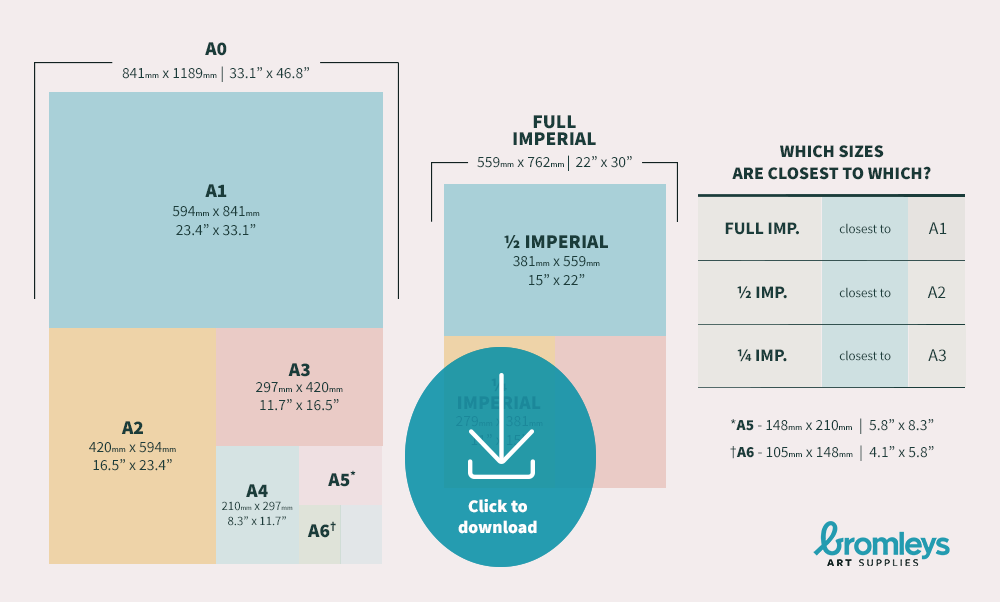
Considering Proportions in Watercolour Paper Sizes
You might wonder why there are so many different sizes of watercolour available, and why standard A sizes aren’t commonly used instead. Proportion could be the answer to that question. For artists, the aesthetics of the finished painting are very important, and the size of the paper contributes to the sense of balance in a painting. ‘A’ sizes sometimes receive mixed reviews from artists in terms of visual appeal. Compare A4 and 9” x 12” side by side and you’ll see that the A4 sheet looks much narrower. This could be why the world of watercolour papers boasts such an array of wonderfully peculiar sizes.
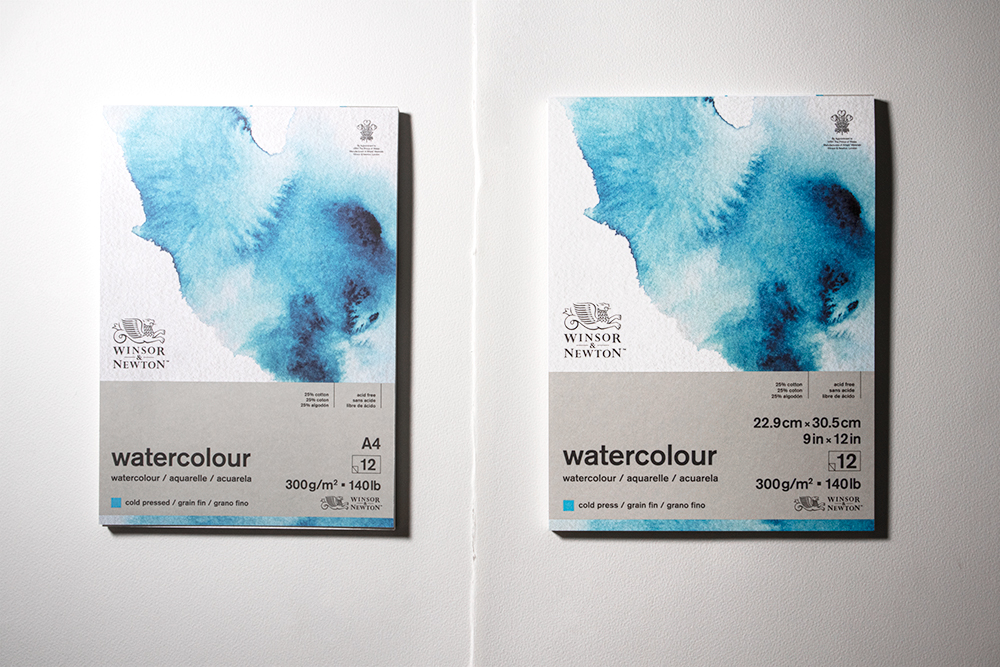
We hope this guide helps you to find the perfect paper size
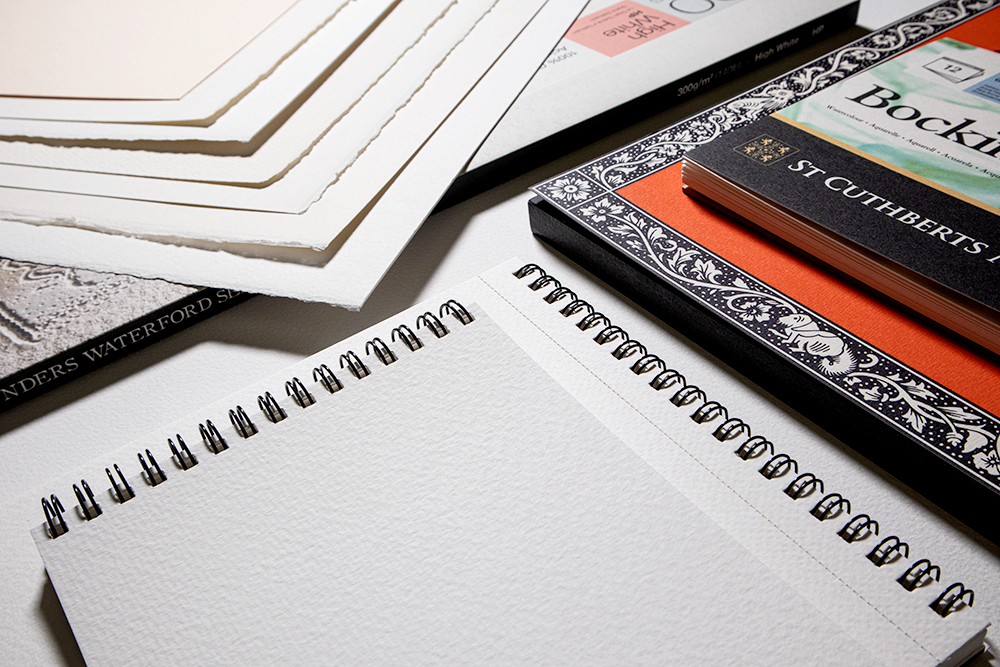
We hope this blog post has helped demystify the labyrinth of watercolour paper sizes. And that it leaves you with a clearer view of the range of options out there. From traditional imperial sizes to metric measurements and the ‘A’ standards, we hope this blog post has answered your questions. Still confused? Let us know in the comments if you have any questions and we’ll do our best to help!
Browse our full range of Watercolour Paper online.
Want to Learn More About Watercolour Paper?
Check out some of our other watercolour paper guides:




